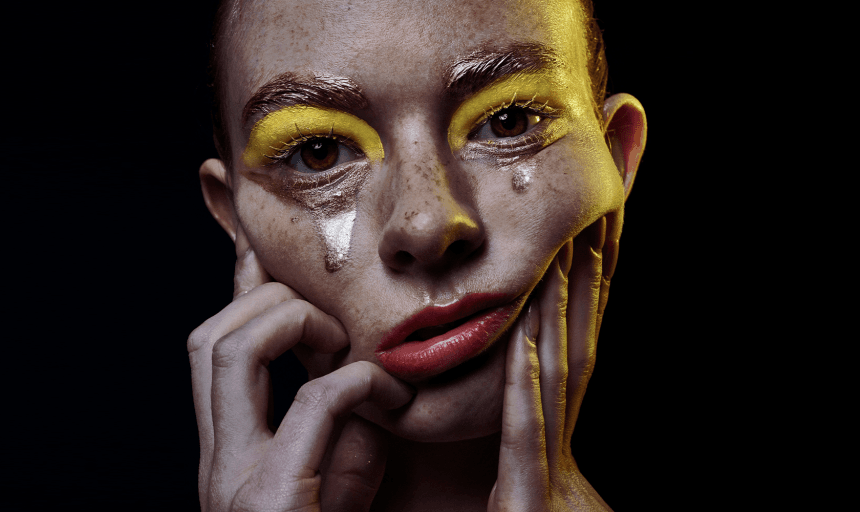
BRANDING IN THE ERA OF THE DESENSITISED CONSUMER
We are branding into a battlefield of numbness. Not boredom—numbness. Engagement isn’t dropping because your offer is weak. It’s dropping because your audience can’t feel anything anymore. That’s the war you’re now fighting: overstimulation, saturation, and emotional exhaustion.
The modern brand doesn’t just need to speak. It needs to cut through. Branding in this era is about understanding how a desensitised human navigates the world, and why their nervous system is no longer reacting to your content.
THE SCIENCE OF SATURATION
The average human brain processes up to 74 gigabytes of data per day—the equivalent of 16 movies back-to-back. With over 70,000 thoughts and half a trillion synapses firing daily, people are bombarded by notifications, content, demands, and brand messaging.
This isn’t a messaging issue. It’s a bandwidth collapse.
The Reticular Activating System (RAS), the brain’s filtration gate, only lets through what feels emotionally relevant or urgent for survival. Everything else? Wiped before it even registers. Now add dopamine fatigue, attention fragmentation, and a consumer ecosystem on sensory overload, and you’ve got a system that deletes anything mediocre before it lands.
BRANDING IS WHERE MOST ARE FAILING, BECAUSE THEY’RE USING TOOLS DESIGNED FOR VIRALITY TO BUILD LEGACY.
This isn’t about marketing tactics. This is about branding. Marketing is what you say. Branding is how you’re remembered. Marketing gets the click. Branding is the feeling that lingers. Branding is the space between what you say and what people feel—without being told. And right now, branding is where most are failing, because they’re using tools designed for virality to build legacy. That’s insanity.
BRAND FAILURE IN A NUMB MARKET
Brands are louder than ever, but are being felt less than ever. Why? Because they’re broadcasting instead of connecting. Repeating buzzwords like “authentic,” “transparent,” and “empowered”; terms that now trigger scroll fatigue. Your audience doesn’t need another message. They need a moment. A feeling.
If your brand looks like it was designed in Canva in 15 minutes, the brain has already decided it’s forgettable. You don’t need to go louder. You need to go deeper. Resonance isn’t about volume—it’s about frequency match.
BRAND AROUSAL: THE BIOLOGICAL & PSYCHOLOGICAL EDGE
Let’s talk about primal branding for a second. In the animal kingdom, male howler monkeys with smaller testicles are the loudest—it’s a trade-off. The louder the call, the lower the potency. Swap out monkeys for marketers and it checks out: the louder the brand, the weaker the substance. This is what I call low-arousal branding. Flashy. Performative. Forgettable.
What actually breaks through? Brand arousal. The same way human arousal sparks desire and relational drive, brand arousal activates subconscious magnetism. It’s when your brand doesn’t just inform—it intoxicates. This happens when branding speaks directly to primal instincts (belonging, power, safety), social intelligence (status, tribe, recognition), and emotional specificity (nostalgia, pride, rebellion). When brands are designed with emotional chemistry and psychological accuracy, you stop playing the content game. You start winning the memory game.
We don’t trust brands. We trust emotional patterns. The brands that stick feel like intimacy, tension, rebellion, and truth. We’re not branding for awareness anymore. We’re branding for arousal, affinity, and addiction.
THE NEW BRANDING MANDATE
If you’re building a brand in this climate, you’re not just a founder. You’re a neurosensory architect operating in a culture of fatigue. Funnels and click rates don’t build a legacy; emotional architecture does.
This is why I created the Brand Review. It’s not a vanity exercise; it’s a psychological diagnostic. It uncovers the dormant, powerful brand arousal triggers that create resonance and imprint. It’s helped founders, public figures, and government leaders collapse years of noise into two hours of calibrated clarity. If you want to build a brand that doesn’t rely on noise but commands attention through emotional gravity, this is where we begin.
THE ERA OF EARNED EMOTIONAL IMPRINT
We are no longer in the era of “getting noticed.” That era is over. This shift wasn’t algorithmic. It was existential. In a post-COVID world, amidst global unrest and cultural burnout, audiences aren’t scrolling for inspiration. They’re scanning for meaning. We don’t want to be sold to. We want to be seen. Soothed. Stimulated.
Your audience doesn’t want noise. They want to feel something real. Branding now must feel like intimacy. It must stimulate. Surprise. Seduce. This is the age of earned emotional imprint. And as always, Newton’s Third Law applies: for every action, there is an equal and opposite reaction. If your brand is templated, low-arousal, and safe, don’t expect a reaction. But if it’s intelligent, emotionally calibrated, and potent? You won’t just be seen. You’ll be undeniably felt and always top of mind.



